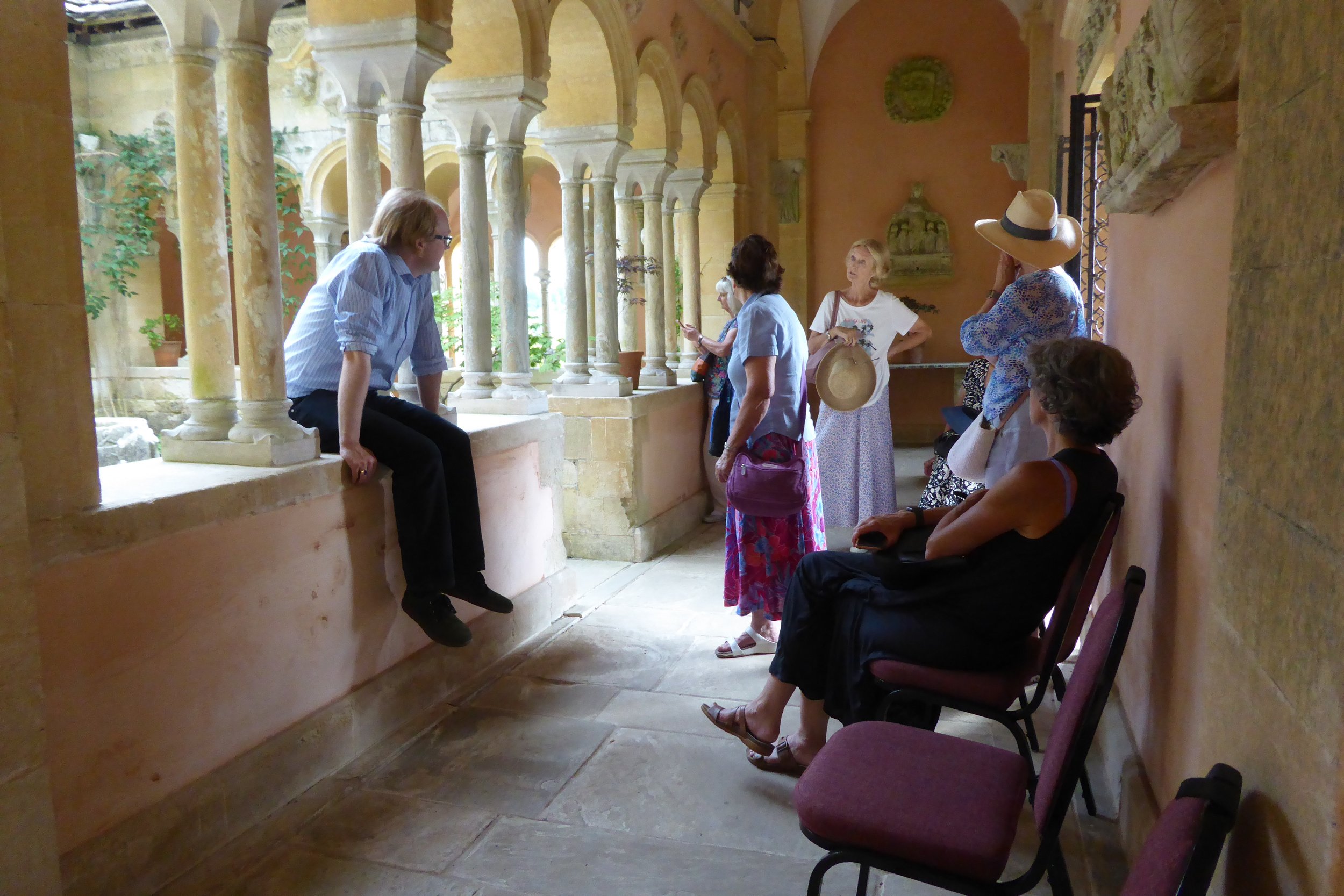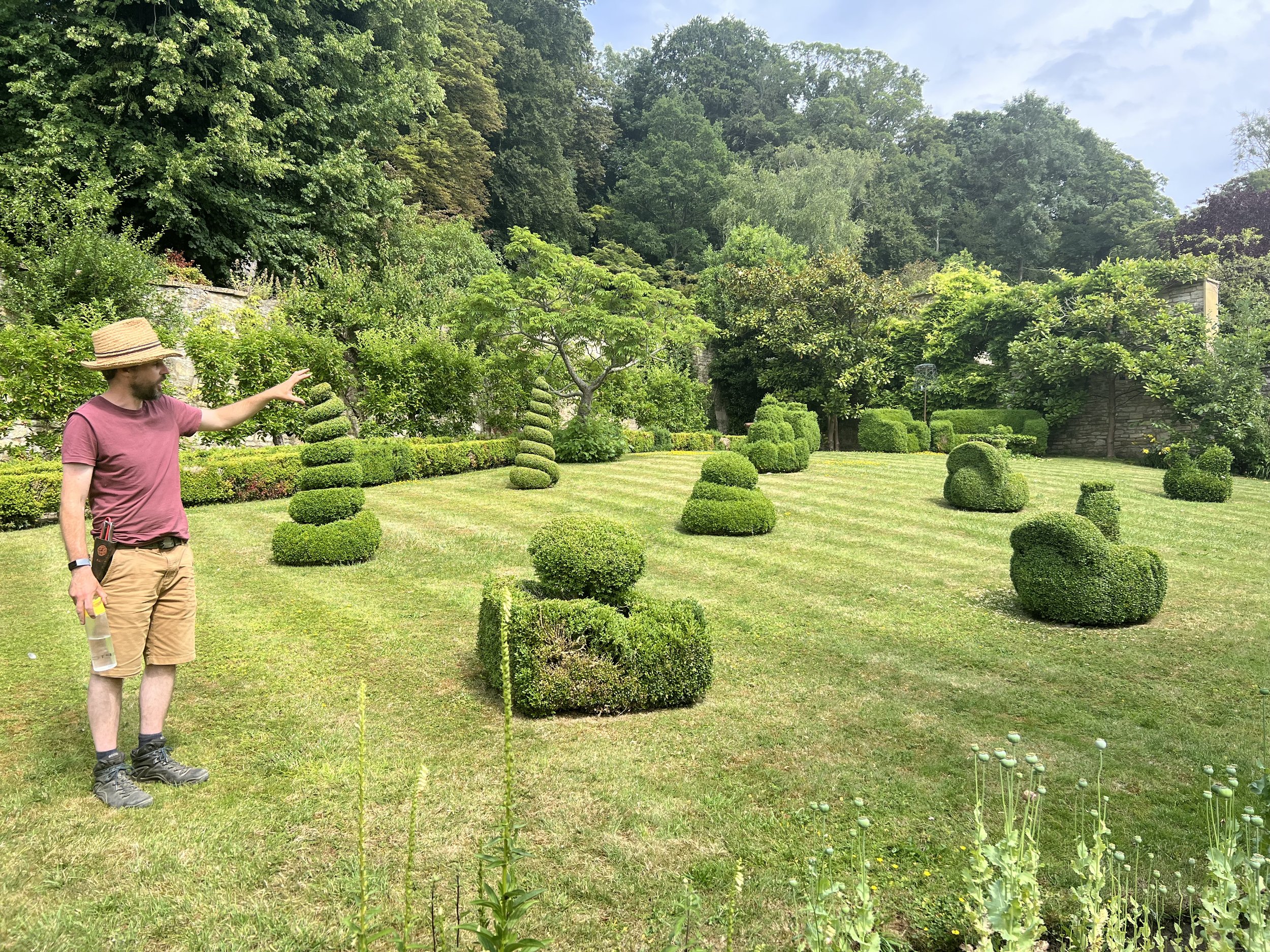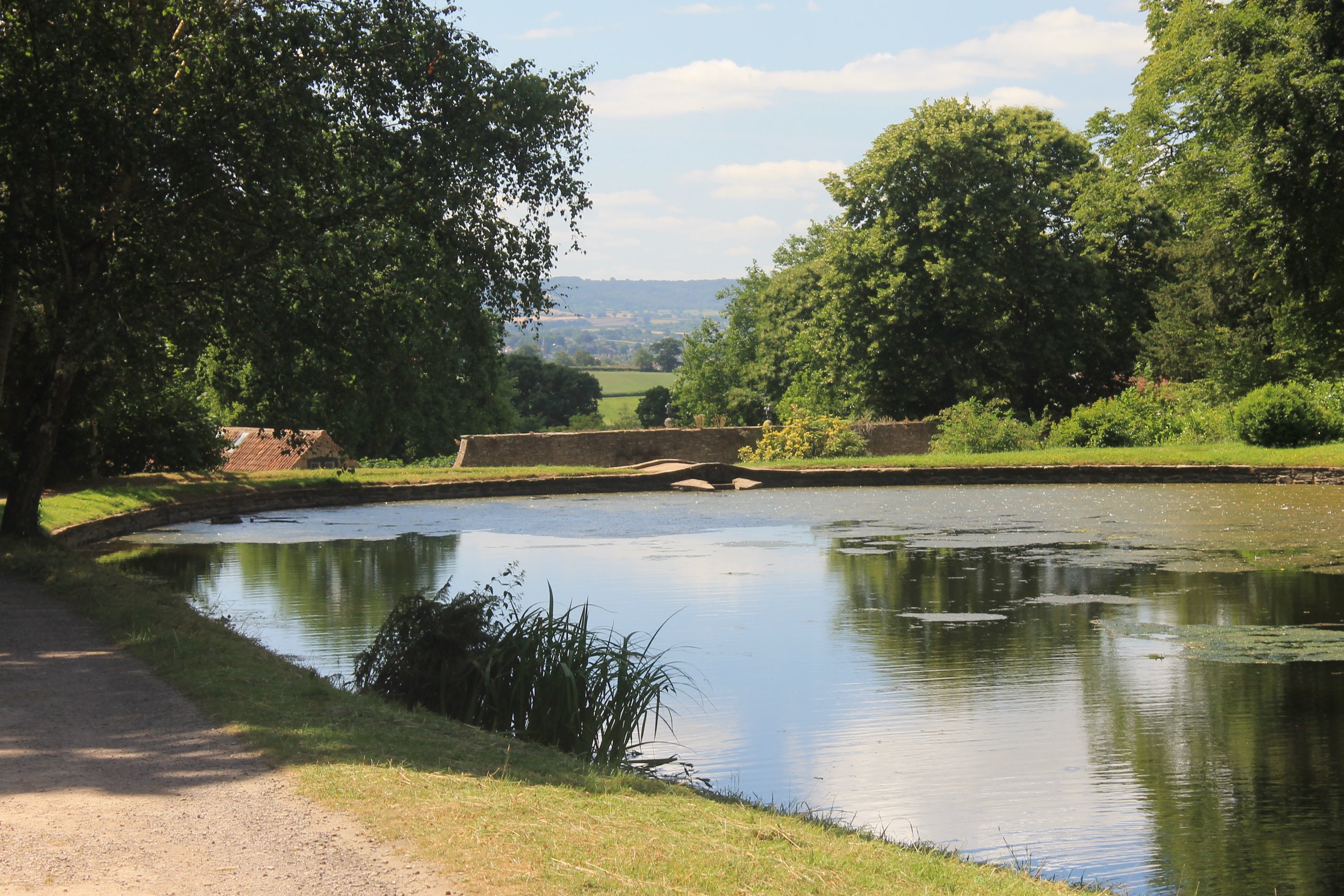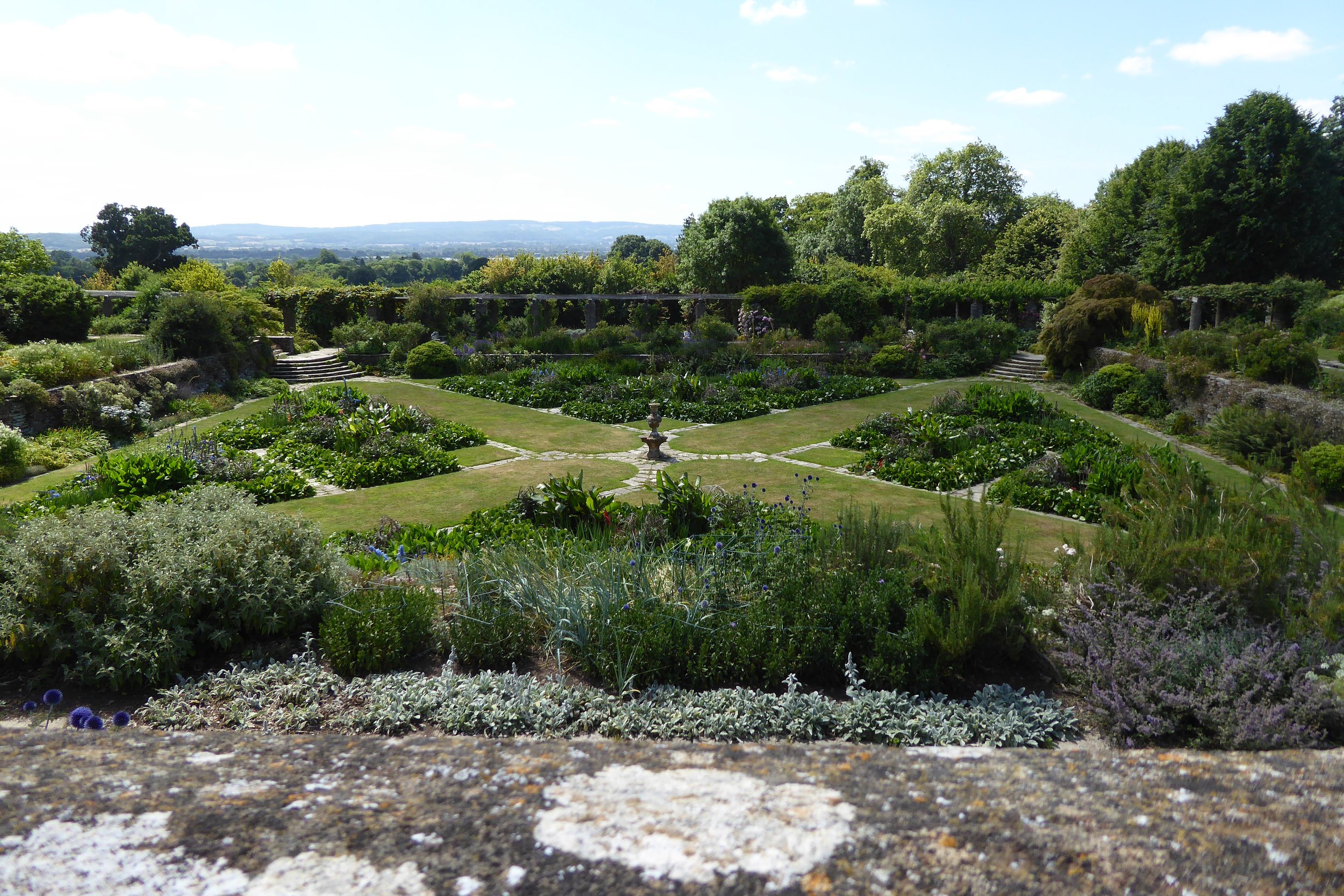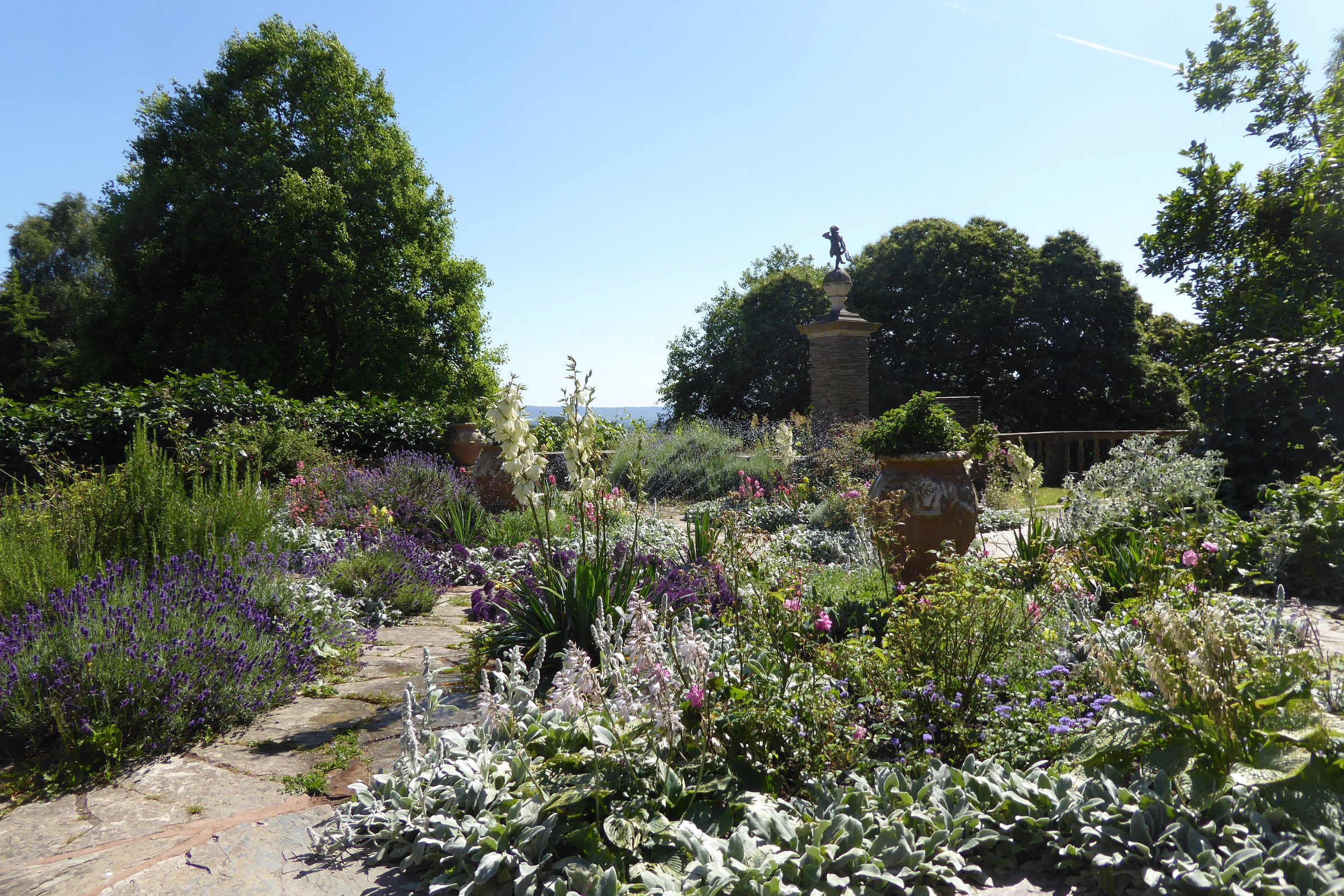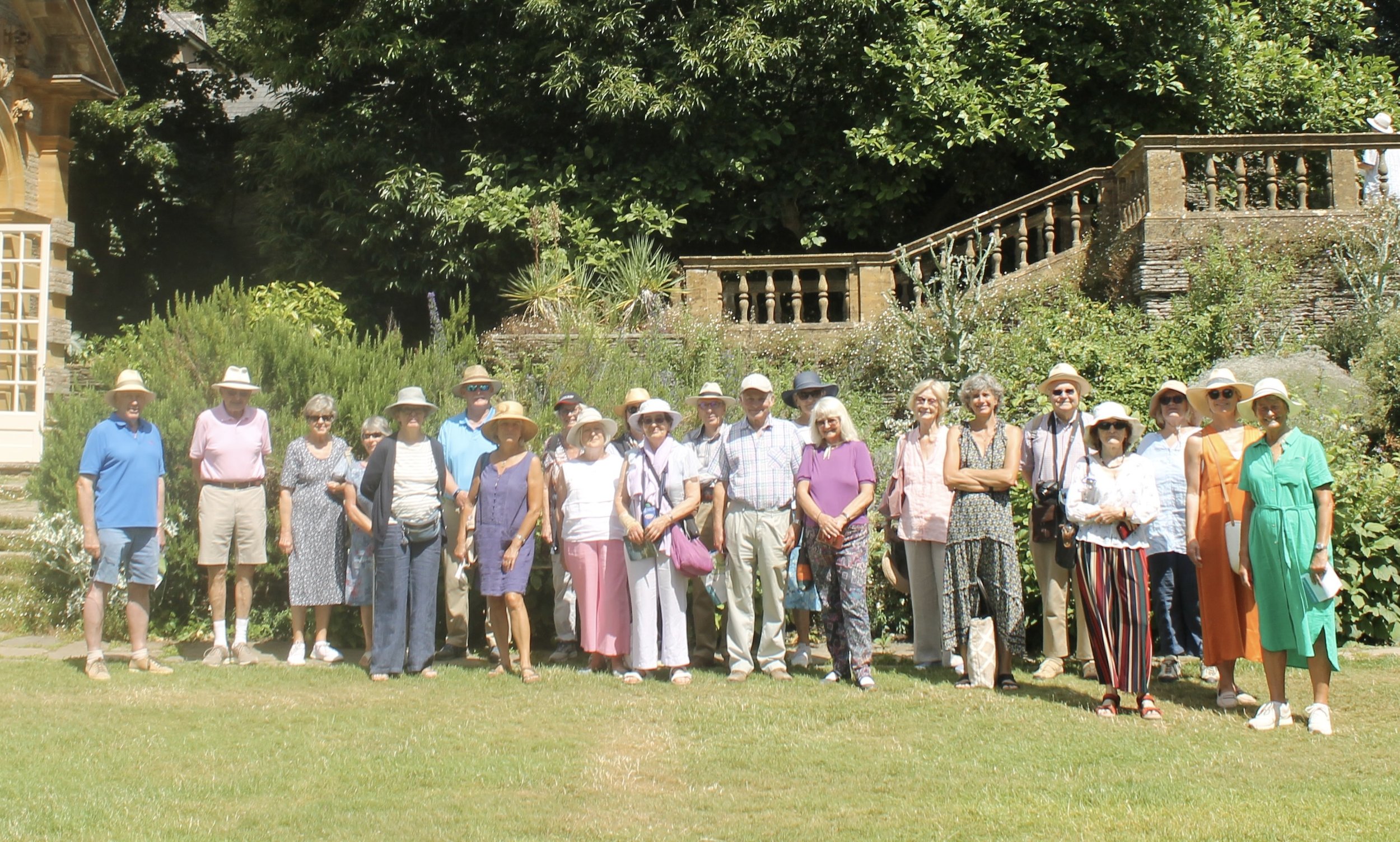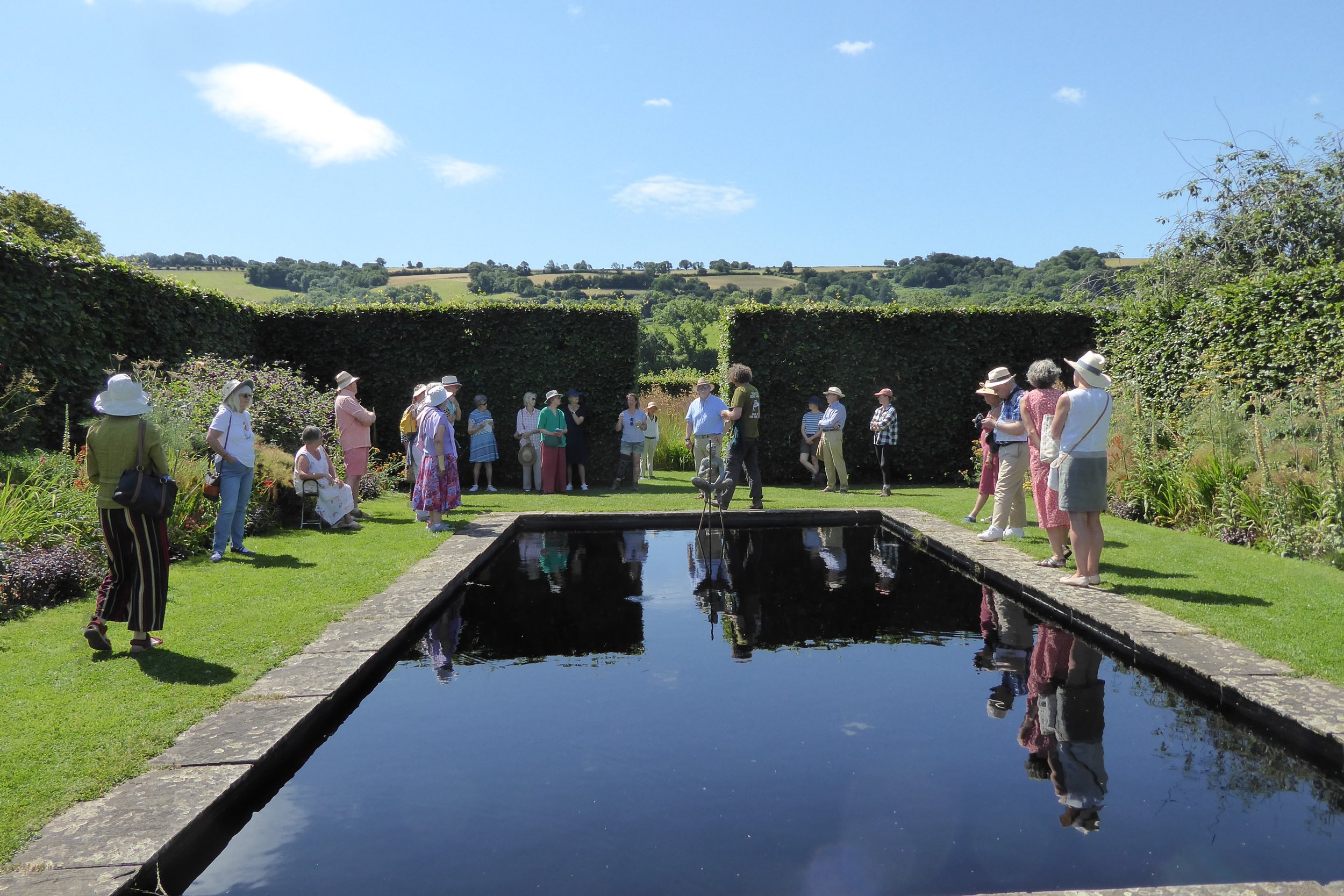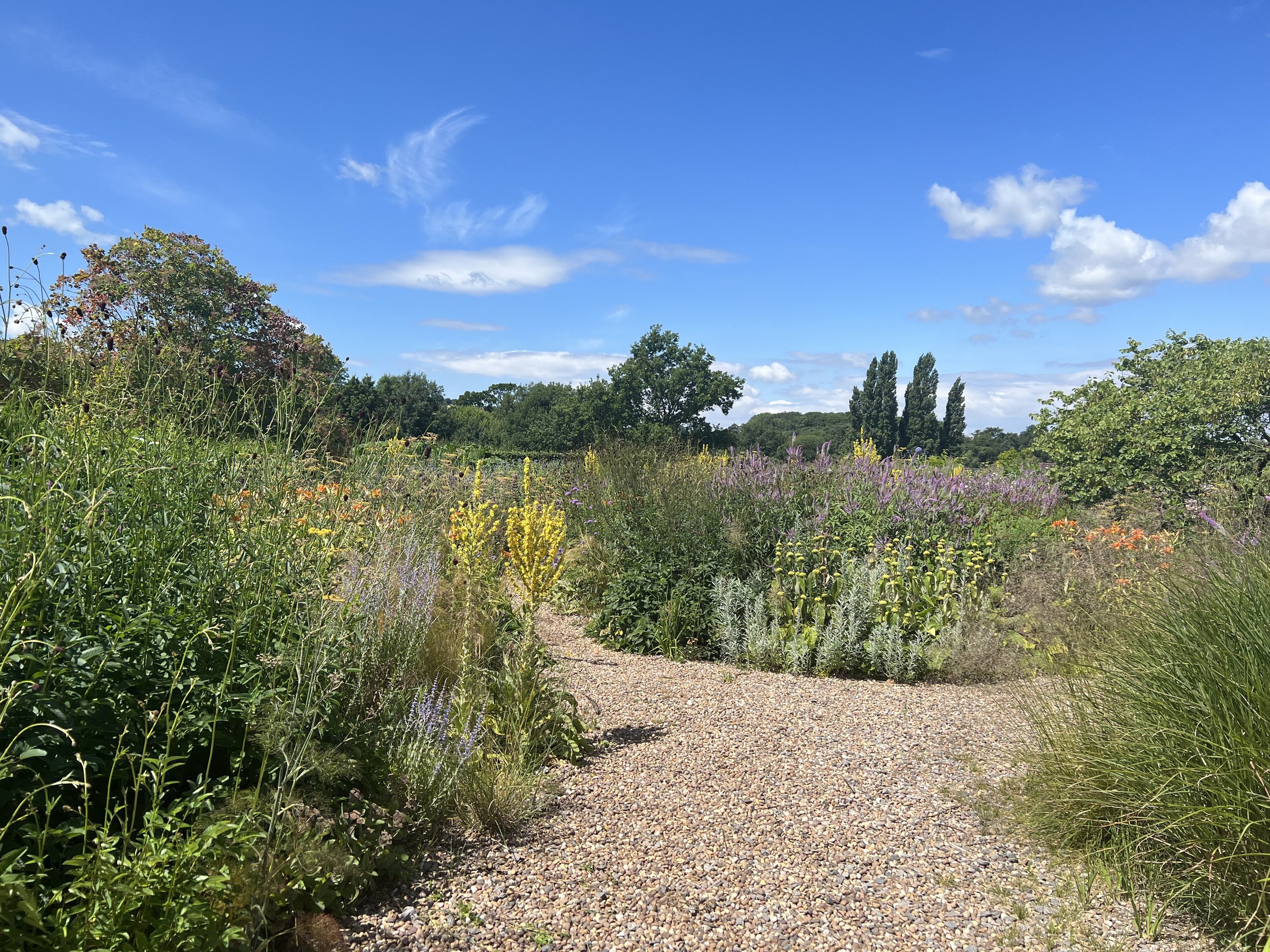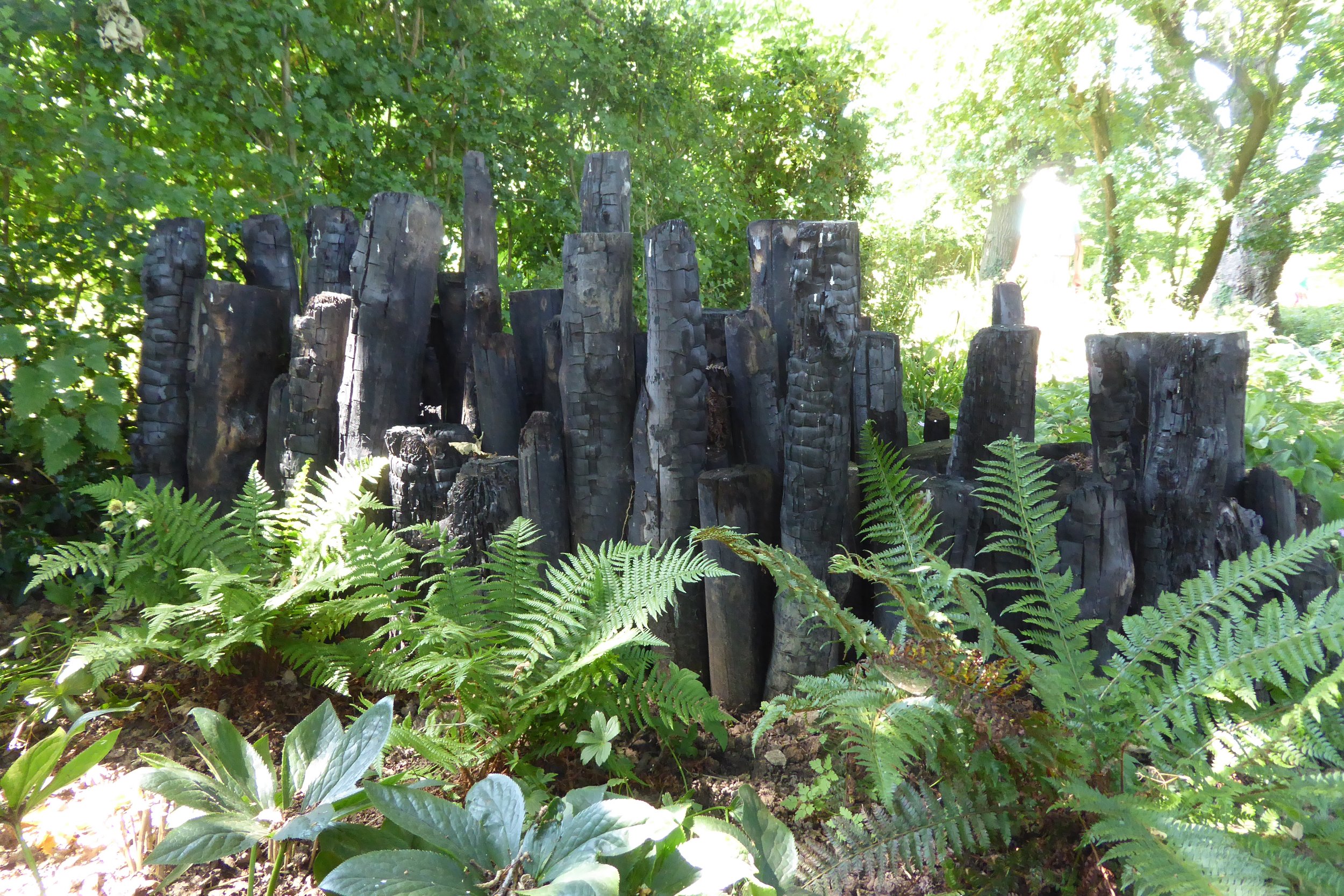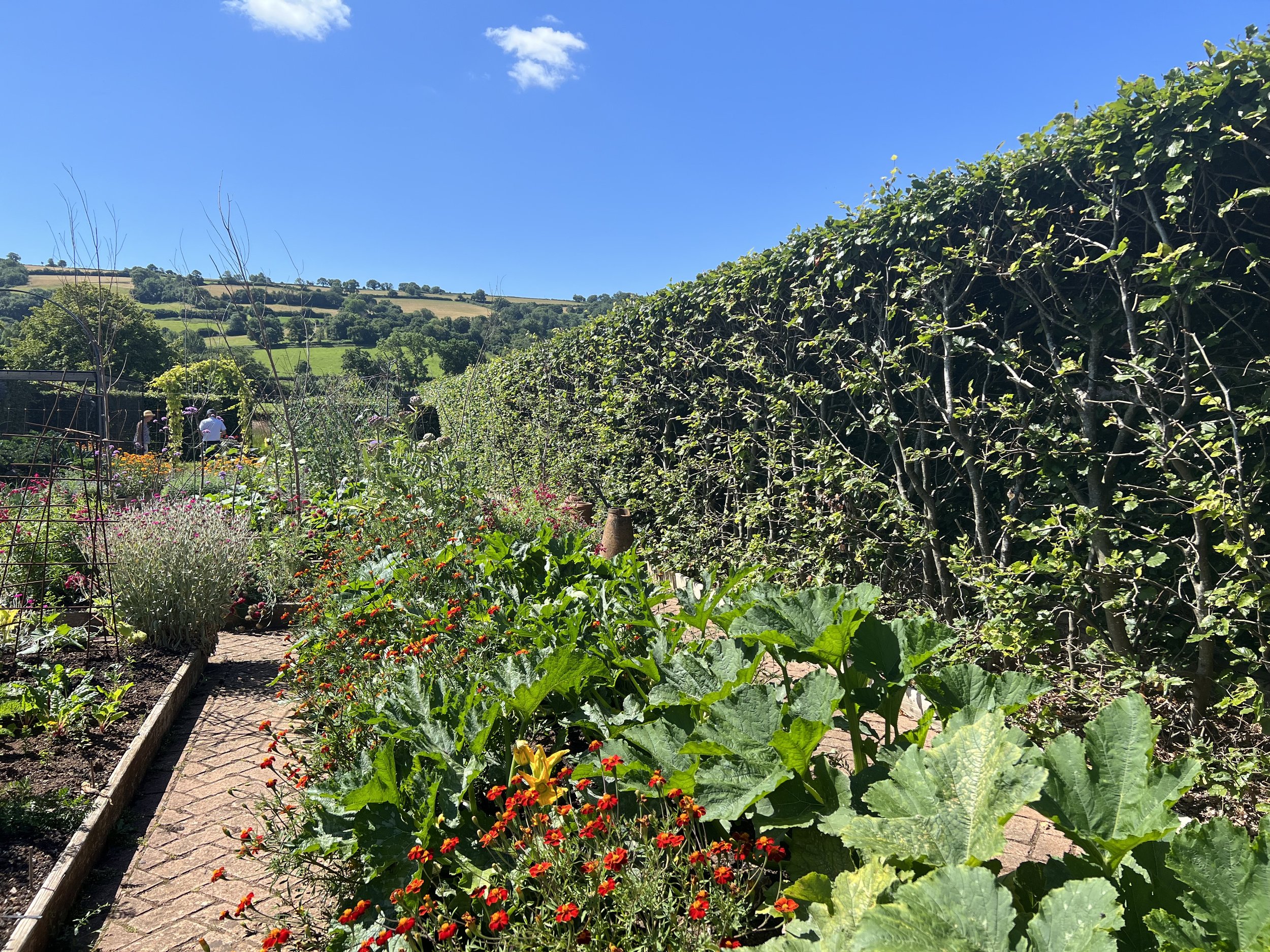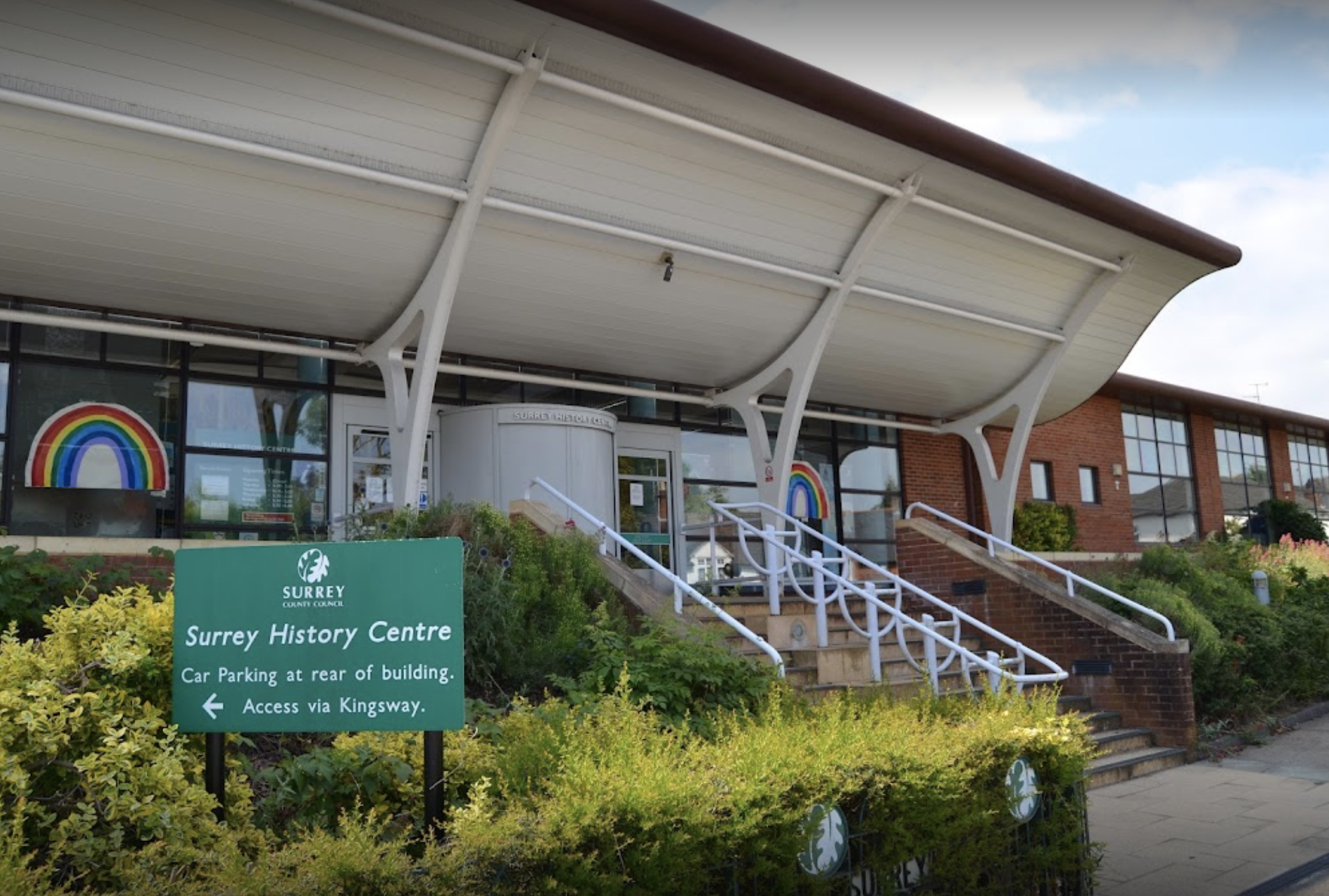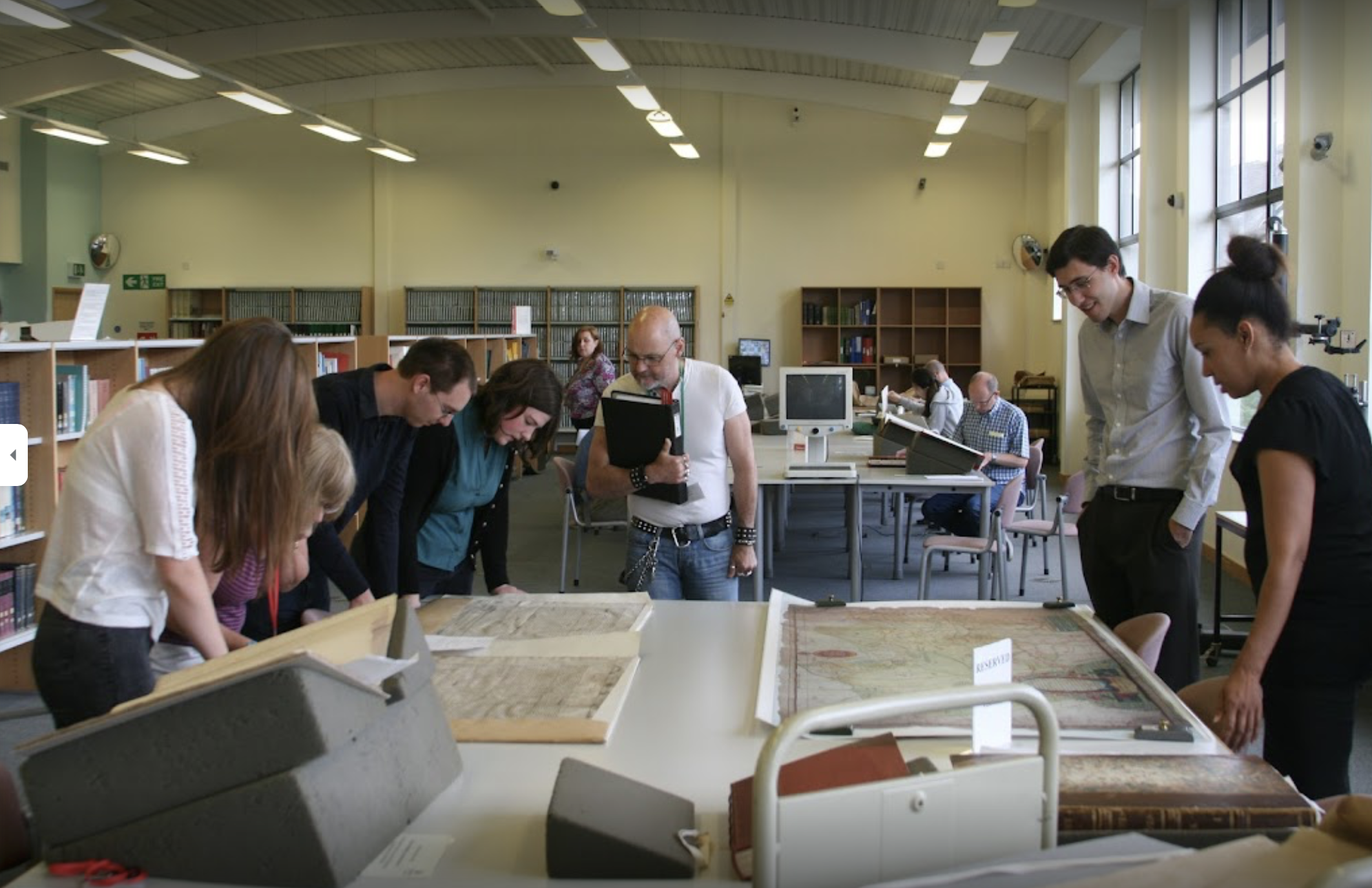from the Chair
I am not sure that any one of us had anticipated that in the week we all watched a further changing of the guard at Westminster we would also witness historical changes at Buckingham Palace. The Queen’s Platinum Jubilee celebrations are a rather distant happy memory, but I hope that the announcement of the winning entry to our own Queen’s Green Canopy tree planting competition will be a welcome reminder in these sad days.
I am this week also starting to write my report for our end of year accounts and once again the task is an extremely positive one. This newsletter will bring you up to date with recent developments and look ahead to new events as we say goodbye to a summer of warm and dry garden visits and look ahead to Autumn’s busy days.
A key objective for 2022 was to reinforce our research and recording capabilities. Our plans are coming to fruition with a Study Day now in the diary for October. Garden history is at the core of all our work. It ensures that the significance of the green spaces we all love and enjoy is understood and valued. Come along to the Surrey History Centre to both hear a little of what a research project can uncover and for a rare back room glimpse of the extraordinary Surrey archives the centre preserves. We have also been working on a number of research projects which will provide new recruits with exciting new work alongside experienced members.
Understanding the history of gardens emboldens us and those with the responsibility for their custodianship to take steps to protect and conserve them. They are not static objects like buildings, they grow and develop. They require careful and sensitive management otherwise they will decay and disappear over time. In this context, we are delighted to be launching our Surrey Head Gardeners Network this month with an event at Ramster in Chiddingfold. Coming together and sharing ideas is always a recipe for great things.
We started the year with a serious of lectures with an underlying theme of the changing climate and the impact that this will have on the management and survival of our historic parks and gardens. We have perhaps had a glimpse or indeed a stark vision of what this will look like as our gardens have gasped for water through the summer drought. With mature trees already bare from early leaf drop and many herbaceous plants and shrubs not surviving the blistering heat we will be listening all the more carefully to the scientists to understand what we can do to adapt. Our guest speaker for the annual AGM lecture and Christmas lunch will certainly be able to add to this narrative.
I have enjoyed spending time with many of you over the summer months; in Somerset on our Le Petit Tour in early July superbly organised by Helen Parvin; on our fascinating trip to Marble Hill in August and most recently visiting the exquisite gardens of Parsonage Farm. I am very much looking forward to our October Study Day and of course, to our Christmas get together.
Content
Le Petit Tour in Somerset
Queen’s Green Canopy Platinum Jubilee Tree Planting Competition Winner
A Landscape in Time: Study Day focussing on research & recording
Gateway report
The Schools Committee is recruiting
Surrey Head Gardeners Network
Save the Date: AGM Lecture and Christmas Lunch
Marble Hill revived
Dates for the diary
Le Petit Tour : Iford Manor, Hestercombe and Yeo Valley Organic Gardens
by Helen Parvin
What an idyllic three day trip this turned out to be, exceptional gardens, wonderful tours, great lunches and to cap it all the most glorious sunny weather.
““Everyone really enjoyed all the gardens and the wonderful food you arranged for us during our visits. We have no photos, just lovely thoughts and memories of a wonderful garden tour. ”
Iford Manor, Bradford-on-Avon
The owner, William Cartwright-Hignett ( in the photograph (left) below relaxed at the end of the tour) treated us to an enthralling performance as he toured us around the terraced gardens. We were warmly welcomed over a delicious lunch followed by a tour of the private walled garden given by the new Head Gardener, Steve Lannin (in the photograph (right)). This garden was designed by the owner’s mother and her creative skills were evident in this quirky unique garden. We marvelled at her shell-house and sat on her unusual topiary.
The main gardens are set out on a steep hillside down to the house. William displayed his knowledge and passion for conserving and enhancing the Grade I listed terraced gardens by giving us the history of the gardens created by Harold Peto at the start of the 20th century. There are several structures including cloisters, colonnade and discreet small enclosed gardens which showed us a mix of Italianate, Japanese and classical designs with the planting schemes specifically nurtured to preserve and restore whilst improving biodiversity.
This visit will be remembered by everyone for William’s enthusiasm and entertaining tour. The mix of soft planting and hard structure, informal and formal, vibrancy and quiet was a delight to our senses. The stories of the goings on over the centuries were truly amusing. It is our intention to return in a few years’ time to see how the garden has developed under the new Head Gardener’s steerage.
““A highlight for me was the guided tour at Iford” ”
Hestercombe Gardens, Cheddon Fitzpaine, nr Taunton
What a delightful mix of landscape and formal gardens awaits you at Hestercombe. One of the gardeners, Gabby ably led us around the Georgian landscape garden, created by Coplestone Warre Bampyfylde in the 1750s. The garden surprised us at every turn with temples, seats, a restored summerhouse, Chinese bridge, lakes and cascade (rather on the dry side due to drought conditions this year). We were then shown past the old watermill, converted to a museum to show the Dynamo House and workings for all the water features at Hestercombe. We enjoyed the Victorian terrace with its formal bedding to commemorate the Queen’s Platinum Jubilee, created by the 1st Viscount Portman, a Whig MP. Gabby then explained the planting choices in the Edwardian formal gardens and we drank in the extensive views of the Blackdown Hills from the Jekyll and Lutyens designed Great Plat garden with its pergola and rills. Wonderful views are appreciated from Lutyens Erigeron lined ‘Daisy’ steps and Orangery completed in 1908. The gardens were restored from evidence found at the site (and Jekyll material found at UC, Berkeley in the US) with ponds dredged, trees removed and structures conserved and rebuilt from the 1970s through to the 1990s. The gardens were open to the public in 1997 and the Great Plat replanted in 1998. Research is ongoing and changes made to the gardens as and when further evidence is discovered.
We were treated to a tasty buffet lunch served in the old stone Bampyfylde Hall and were free to tour the 50 acre gardens afterwards. The art displays in the house were of ecological interest and we learned a lot from the archival footage shown in the Octagon Summerhouse, Dynamo House and Portman vault.
Photographs clockwise: Pear Pond, Great Plat, the tour group by the Orangery and the Dutch Plat.
““Delighted that the gardens were so well looked after and that the exhibitions in the house were relevant and interesting”. ”
Yeo Valley Organic Gardens
The passion, excitement and enthusiasm of the garden owner, Sarah Mead and her staff who toured with us, really made the whole experience of this garden visit truly remarkable and memorable.
Sarah explained, whilst we started the tour at the most important part of any garden, the compost yard, that everything in the whole operation is carried out organically. This is a relatively new garden created some 18 years ago and is constantly evolving and now houses the Gold award winning ‘Egg’ created for the Yeo Valley Garden in 2021 at Chelsea. The garden ‘rooms’ are all created for biodiversity with soil health at their hearts. Highlights were the Silver Birch grove which gave us some welcome shade from the hot sun that day and the gentle waving and caressing of your skin of the tall grasses as you wondered through the Big Grass bed. The gravel garden held an interesting but limited palette of plants with beautiful views down the valley to the lake. Different parts of the gardens will come into their own during the seasons and our group expressed interest in visiting again in a future Springtime.
““We felt it was a good choice and it offered a range of properties that provided an excellent contrast of scale and styles of landscape character. The highlight of the tour from our perspective was the visit to the Yeo Valley Organic Garden. Although we had heard it was good, we were greatly impressed with the overall concept, the design of spaces and the use of plants. Excellent description of the organic method adopted, not least the importance of making compost. Sarah Mead has an impressive concept with quality of design and colour of the planting. ”
We have all taken so much away from the trip …and to sum it up…
““Nice to meet and chat to new people, good to be able to drive independently and I’ve never seen so much linen !!!!!” ”
Queen’s Green Canopy Platinum Jubilee Project
SGT ‘Let’s Plant a Tree’ Competition
We are delighted to be giving an award to Farnham Museum garden following an application from their team of seven gardening volunteers who meet weekly to care for the garden. The garden was restored to a new design in 2008 and is thriving save for two of the fruit trees. The award will replace these which are a key element of the design. We look forward to reporting on progress once the trees are planted in late November.
A Landscape in Time: Study Day Focusing on Research & Recording
Surrey History Centre
Tuesday 11 October 2022, 9.30am – 2.30pm
This study day is appropriate for anyone interested in the historic gardens of Surrey. The day is aimed at both the experienced researcher and those new to research. Do join us at Surrey History Centre (SHC) when we will explore the centre’s rich repository of historic materials and learn more about the process of researching a historic landscape or garden. The day includes two fascinating illustrated lectures:
An introduction to the wide range of sources available at the centre on garden design, plants and Surrey’s gardeners over seven centuries.
A journey of research and discovery: Research in Action - The History of Marden Park.
We will also enjoy a comprehensive tour of SHC including the archaeology finds room, conservation room and strong room.
Our speakers
Julian Pooley F.S.A, Public Services and Engagement Manager at Surrey History Centre in Woking, Julian has been a professional archivist for thirty-five years and haspublished widely in the field of eighteenth century antiquarian and biographical research.
Sandra Pullen is a member of Surrey Garden Trust’s recorders group. She is co-convener for the Garden Trust’s online ‘Unforgettable Gardens’ series and has an MA in Landscape and Garden History from the Institute of Historical Research.
Tickets
£20 (SGT Members) / £23 (non-SGT member)
Book tickets through our website and Eventbrite
Deadline for booking is Tuesday 4 October
Some highlights from the Gateway Visits this summer
by Alex White
Our final Gateway visit took place on Thursday 8 September at Westbrook, Godalming. Threatened with cancellation due to a week of stormy weather and frequent biblical downpours, it was agreed we would attempt the visit. Justine Voisin was happy to host and Parkside garden club members had no mobility issues, so we all turned up during one of those heavy bouts of rain. Donning our raincoats and umbrellas the skies quickly cleared and by the end of our tour the rain had ceased and we caught a glimpse of sunshine. At the end we were treated to delicious refreshments in their spacious dining room. Much restoration work had taken place since our last visit and the garden was looking spectacular.
In complete contrast were the late July and early August visits which took place in searing heat and unbroken sunshine. Our generous hosts at Grattons and West Horsley Place made special arrangements to enable the visits to go ahead with ice cold refreshments and shade.
It was good to welcome two new users to the Gateway scheme. Angela Gallino, formerly of Bell’s Piece in Farnham, made contact earlier in the year. Her garden group at Parkside, Aldershot, had three visits and their Youth group came on two visits. Both the youth groups and our other new user the Halow project, had a slightly different agenda. Gateway visits historically comprised a garden tour of around 1 hour, often led by the owner, followed by refreshments. The youth groups were more geared up for a day out, with picnics. Our hosts were all incredibly accommodating: at Ramster, Halow Trust picnicked and organised their own activities in the afternoon. Sheri at Grattons laid on extended refreshments and provided shade for their picnic lunch. West Horsley Place gave us the run of the whole garden to use as we saw fit for their picnics and the head gardener, Matt Links made sure that everyone had a wonderful experience. The photograph amongst the sunflowers sets the scene.
In total there were 9 visits, including one cancelled on the morning of the visit due to staff Covid. Without exception, the hosts have been amazing, I can’t thank them enough for their generosity of time given, refreshments provided and sympathetic understanding of the needs of each group. My special thanks go to Susannah Money who not only hosted two visits but came on many others and has assisted me hugely.
These are some of the quotes said by the young people from the Halow project while walking round Ramster:
“‘I like looking at new things. It is amazing what Miranda had done with her garden. When you walk up and down again you get to look at lots of new things’.”
“‘I liked walking in the fresh air. I liked seeing the sheep in the field’.”
“‘I loved the sculptures and seeing the dragon bench. But my favourite is the one like Maverick from Top Gun - the vulture’.”
“‘There’s a lot of colour and the sculptures were interesting. I like the purple flowers in the Tennis Court Garden’.”
Members of Halow project with Miranda Gunn at Ramster.
In conclusion, it has been a most satisfactory year for the Gateway project, one on which I can continue to build next year.
In front of stunning hollyhocks at Loseley Park with Parkside garden club.
Our Schools Awards go from strength to strength
The Schools Committee is recruiting
The Surrey Gardens Trust Schools Awards have provided grants to over one hundred local schools in the last ten years, responding to primary and junior school applications through our annual scheme for funding to help with projects that improve their school grounds and give children the opportunity to grow plants and to extend their wider learning of the environment.
Details of this year’s grants totalling £6,225 can be found on our website under Outreach -Schools. Follow up visits to the schools give members of the Schools Committee a much appreciated and enjoyable insight into how these projects really do make a difference.
We would like to recruit new members to the Schools Committee. ‘Many hands make light work’ says Wendy Craft who chairs the committee. Wendy is a retired Head Teacher and enjoys staying involved with the school communities.
The awards scheme is now well established. Our committee meets in the Autumn to review the awards process for that year. In January, Wendy sends an email to all Surrey Nursery, Junior and Primary schools inviting them to send in an application form which explains what their project is about and a breakdown of their costs.
The committee meets just after Easter to judge the applications and decide if it meets our criteria. If the project is modest, we can give the full amount. If the project is large, we identify an area we can contribute to in a meaningful way.
During the Summer term we try and visit schools to take some photographs and listen to infectious enthusiasm of the children. Our follow up visits to schools not only give us an opportunity to see what wonderful work the schools are doing but also to talk to the schools about the Trust and our work.
‘The contribution the Trust makes to schools is so important as having enough money is always an issue. I think the effect of a well planned outside space on the mental health of the children and indeed the staff is so satisfying to see’ says Wendy.
If you are interested in working with Wendy please contact her at: chairsurreygt@gmail.com.
Surrey Head Gardeners Network
At the end of September, Miranda Gunn of Ramster Gardens is kindly hosting our first meeting of the Surrey Head Gardeners Network. This is a Surrey Gardens Trust initiative to bring together gardeners across the county on a regular basis to offer a collaborative approach to caring for Surrey’s green spaces. The overall objective is to provide a supportive forum to share experiences, ideas and challenges which affect the head gardeners in their own gardens as well as addressing wider issues affecting the horticultural industry.
The Trust has formed mutually beneficial relationships with many head gardeners over the years and we hope that through this new group we will be to facilitate closer friendships between the gardeners themselves, many of whom work alone or in small teams without professional colleagues to turn to for advice. The job of a Head Gardener can be a lonely one and in a small way we can help to create a mutually supportive environment as these talented men and women not only work hard to meet the challenges facing them day to day but also to promote their sites enabling them to grow and develop for the future.
I look forward to reporting further on this new initiative.
If you are a Head Gardener or know of a Head Gardener in Surrey whom we have not reached yet, please do get in touch: chairsurreygt@gmail.com.
Save the date
AGM Lecture and Christmas Lunch
10 December 2022, 11 am at The Old Barn Hall, Great Bookham
We are delighted to be welcoming Kevin Martin the Head of Tree Collections at the Royal Botanic Gardens, Kew as our guest speaker at our annual AGM Christmas Lecture and Lunch.
In his role, Kevin is charged with the curation and management of Kew’s unique and historic collection of trees from around the globe for the purpose of scientific research and conservation within a UNESCO World Heritage Site landscape.
In his lecture, entitled Planning the Future, Kevin will talk about the future of our tree scape and the effects of climate change on species selection.
Kevin sits on several boards including the Arboreta Advisory Committee for Westonbirt and Bedgebury. He is also a member of the UK Botanic Garden and Arboreta Collections Consortium (UKBGACC). We are very much looking forward to hearing more of the vital work he and his team are engaged in.
Kevin says that his favourite tree at Kew has to be the chestnut leaved oak ((Quercus castaneifolia) as when he was starting his career at Kew as a climbing arborist, it was a tree he was in awe of with its size and structure.
Quercus castaneifolia at Kew ©davislawordpress.com
Marble Hill revived
Our marvellous events team had spotted that Marble Hill House was reopening in May this year after an extensive restoration project and arranged a visit in August, when we were treated to a fascinating guided tour by the excellent English Heritage team and volunteers.
This short piece is intended to wet your appetite to visit. Convenient parking in the park gives easy and free access to see the carefully and cleverly curated restoration of the Georgian house and the project to restore the 18th century gardens… and we can highly recommend the cafe.
The story of this enchanting house and landscape’s creator, owner and occupier, Henrietta Howard is itself beguiling. Built in the 1720s, Marble Hill was an idyllic Thames-side retreat from court life for Henrietta, an intelligent and charismatic woman who entertained many of the poets and wits of the age.
Extract from the plan of Marble Hill made in about 1749 © Norfolk Record Office, MC184/10/1 (rights reserved)
The English Heritage website explains how research for a conservation management plan in 2014 revealed a plan dated 1749. This details the gardens created by Henrietta and shows many of the garden features including a Green House, Ice House and Ice House Seat, Flower Garden, Ninepin Alley and Grotto. It also shows the layout of the garden, which has lead historians to understand for the first time that the design was based on ideas from classical literature and the gardens of ancient Rome.
The Ninepin Alley, Grotto and Flower Garden have all been restored. Planting is at an early stage but you are able to get a real understanding of how the gardens would have been used.
The plan also reveals lots of detail of planting, where hedges were located, as well as distinguishing between groves (trees laid out in a regular formation), orchard, wilderness areas and densely planted areas or thickets.
We were all delighted to hear that Marble Hill was saved for the nation by an Act of Parliament in 1902, which followed a public campaign to preserve the view from Richmond Hill from suburban expansion when the house then owned by the Cunnard family was the subject of a planning application for a new housing estate.
Dates for the diary
22 September
The Lutyens Trust Webinar: Munstead Wood: Miss Jekyll’s Surrey Home 90 years on with Chair of The Lutyens Trust, Clive Anslet and Head Gardener, Annabel Watts. Register through www.lutyenstrustamerica.com.
25 September
West Horsley Place Community Archaeology week ends with an Open Day on Sunday 25th September. Read more on their website: www.westhorsleyplace.org.
2 October
NGS Open Day Albury Park. www.ngs.co.uk.
26 october
Surrey History Centre Webinar: John Evelyn in Surrey. Visit their website: www.online.surreycc.gov.uk.




